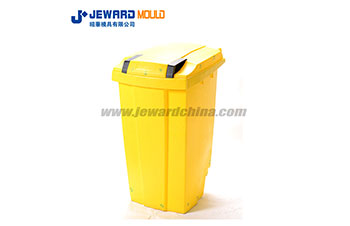Maintaining cleanliness and ensuring proper waste management are crucial in hospitals to prevent the spread of infections and promote a healthy environment. Dust bin moulds play a significant role in improving hygiene standards by providing reliable and efficient waste disposal solutions. In this blog, we will explore the multiple ways dust bin moulds can enhance hygiene practices in hospitals.
Dust bin moulds are specifically designed to meet the unique requirements of hospitals. These moulds are constructed using high-quality materials and are resistant to chemicals, ensuring durability and longevity. They come in various sizes and shapes, allowing for effective waste segregation and disposal. The lids and openings of these moulds are designed to prevent odors, leakage, and the entry of pests, making them ideal for use within healthcare facilities.
Proper waste segregation is crucial in hospitals to minimize the risk of cross-contamination and promote recycling efforts. Dust bin moulds can be equipped with different compartments to facilitate segregation according to specific waste categories, such as biomedical waste, recyclable waste, and general waste. By encouraging healthcare professionals and staff to separate waste at the source, dust bin moulds effectively promote hygienic waste disposal and recycling practices.
Hospitals require dust bin moulds that prioritize hygiene and minimize the risk of bacterial growth. Certain dust bin moulds feature antimicrobial coatings or surfaces, preventing microbial colonization and reducing the likelihood of germs spreading within the environment. These special coatings can effectively inhibit the growth of harmful bacteria, such as E. coli and Staphylococcus aureus, contributing to a healthier and safer hospital setting.
Maintaining cleanliness in hospitals is a continuous process, demanding hassle-free cleaning and maintenance measures. Dust bin moulds are designed with smooth surfaces that are easy to clean, helping to eliminate stubborn stains and odor-causing bacteria. In addition, these moulds can be disassembled, facilitating thorough cleaning of all components. Regular cleaning and maintenance of dust bin moulds ensure a hygienic waste disposal system that minimizes the risk of contamination.
Incorporating dust bin moulds in hospitals promotes sustainable practices that contribute to a healthier environment. These moulds are often made from recyclable materials themselves and can be recycled at the end of their lifespan. By investing in dust bin moulds, hospitals not only improve hygiene but also support eco-friendly waste management systems. Furthermore, the implementation of effective waste disposal practices reduces the hospital's carbon footprint and fosters a sense of environmental responsibility within the institution.
The use of dust bin moulds in hospitals can greatly enhance hygiene standards, contributing to a healthy and safe environment for patients, healthcare professionals, and visitors alike. By promoting waste segregation, offering antimicrobial features, facilitating easy cleaning, and encouraging sustainable practices, dust bin moulds prove to be a valuable asset in maintaining cleanliness and improving hygiene within healthcare facilities. Investing in these moulds ensures an efficient waste management system, minimizing the risk of infections and promoting a hygienic hospital environment.

